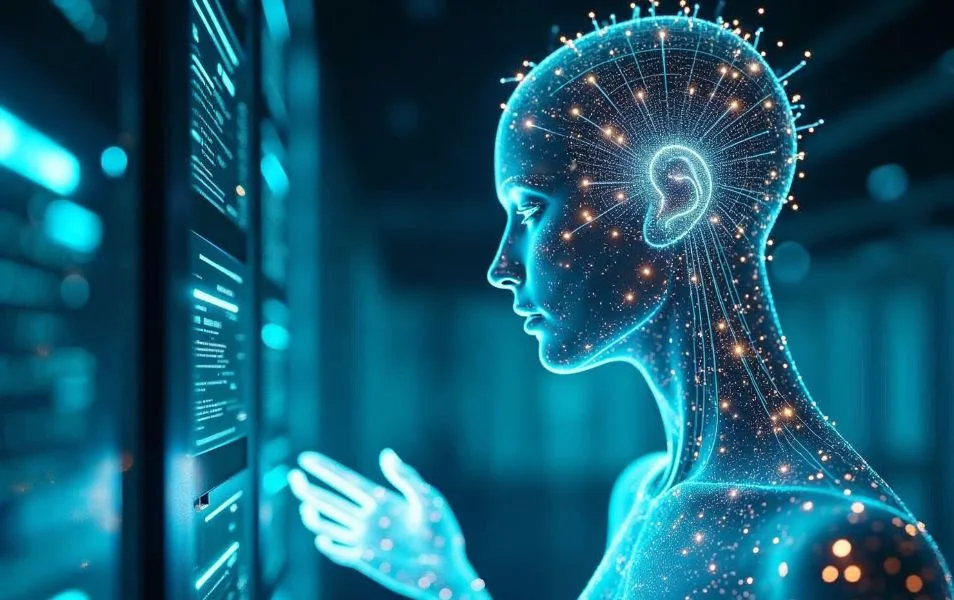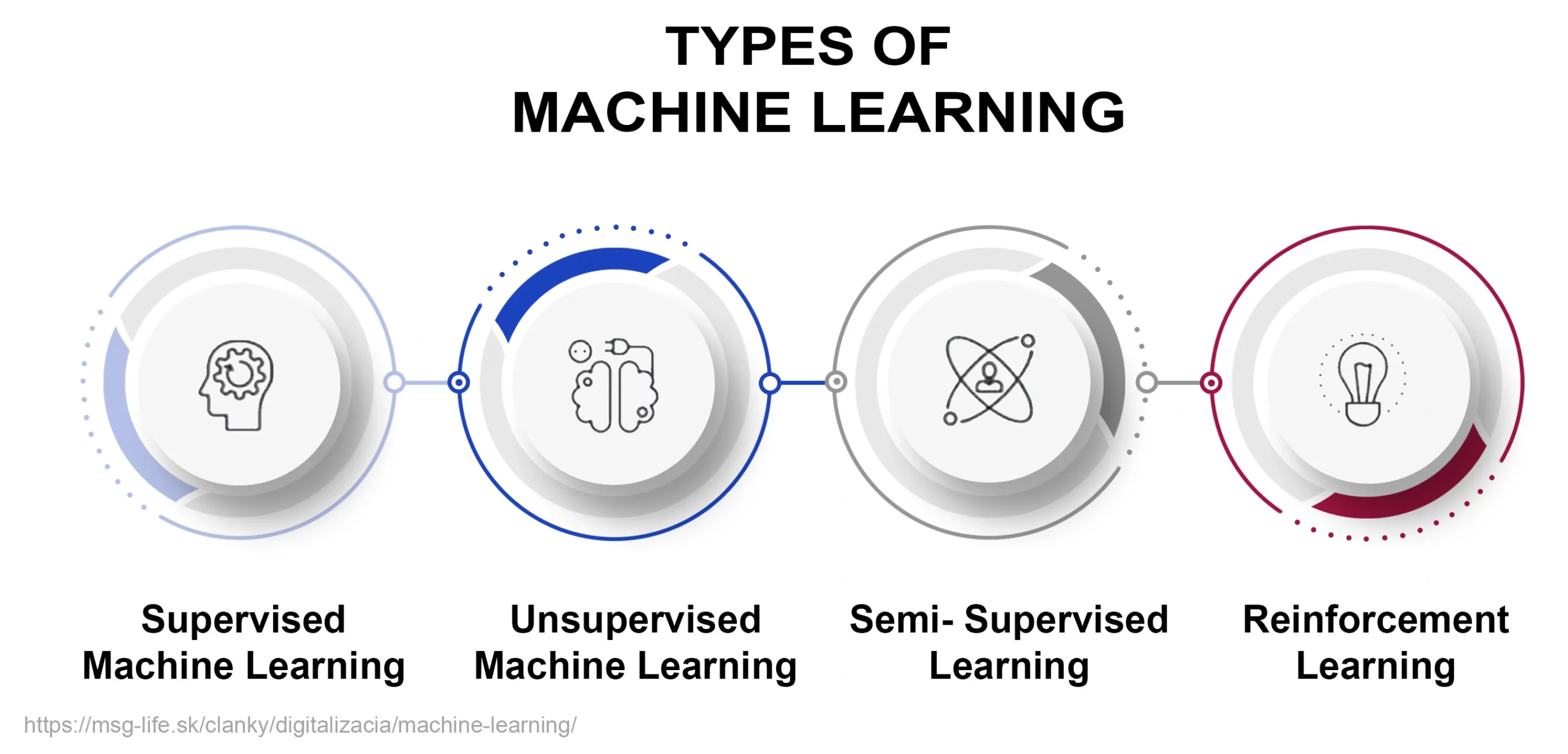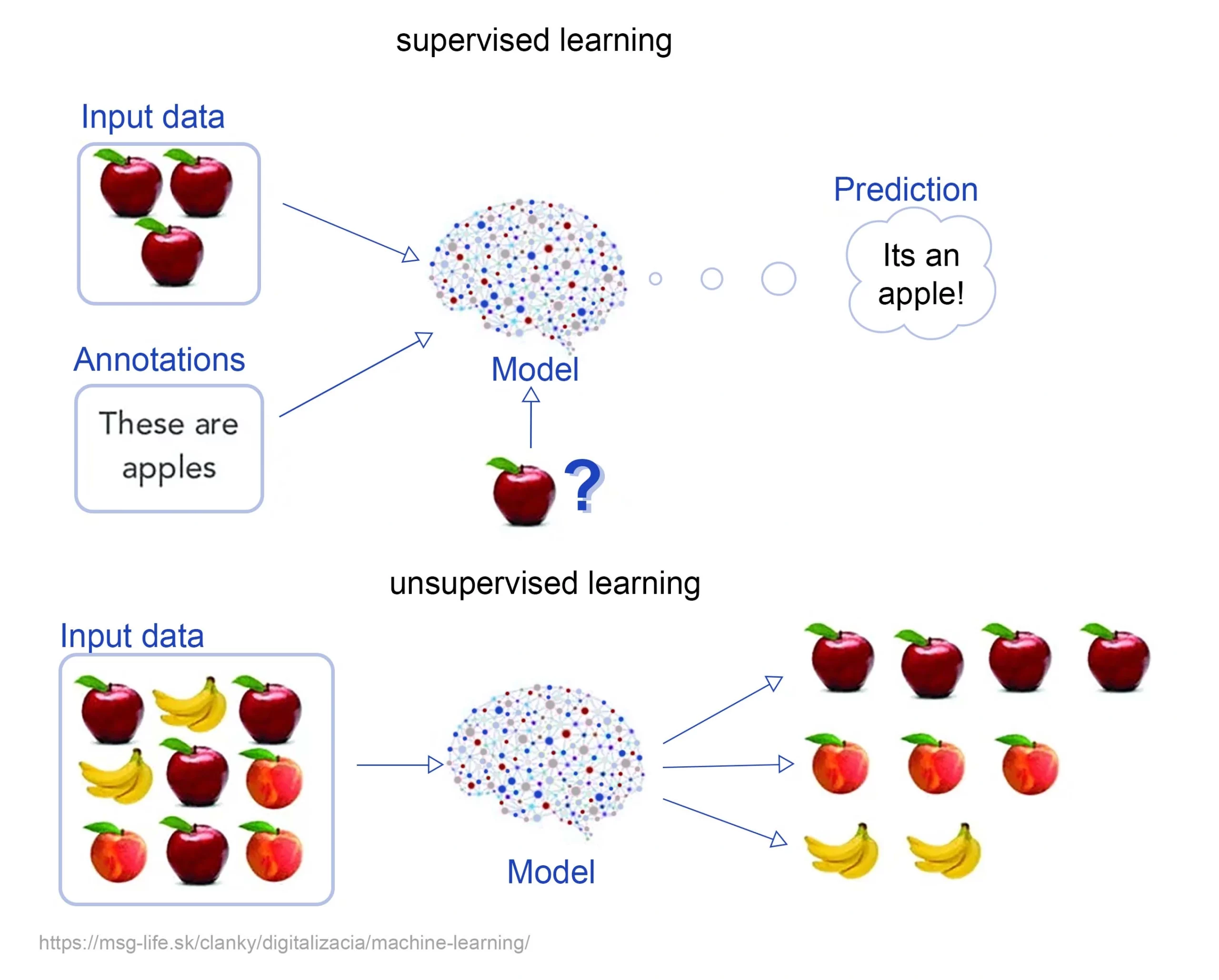What is Machine Learning (ML) – Definition, Models and Difference from AI
Machine learning forms the foundation of artificial intelligence. It enables computers to learn from data, recognize patterns, and make decisions without being explicitly programmed. While it doesn’t enjoy the same level of buzz as „AI,“ machine learning (ML) is the engine driving most real-world AI applications. From predicting Netflix shows to helping cars drive themselves, ML touches nearly every industry and part of life.

In the article you will learn:
Machine Learning vs AI (artificial intelligence)
These terms are often used interchangeably, but they aren’t the same. Artificial intelligence (read also What is Artificial Intelligence) is the broader concept of machines being able to carry out tasks in a way that we would consider „smart.“ ML is a subset of AI that focuses on the idea that systems can learn from data and make decisions based on their own.
In short:
- AI is the goal — intelligent behavior by machines.
- ML is one approach to achieving artificial intelligence — it works by learning from data.
In this article, we’ll take a look together at the basics of machine learning, its benefits, challenges, strategies, and what businesses should know about it. Machine Learning (ML wiki) is an extremely complex yet interesting topic and there is a lot that can be written about it, so we will focus in this text on getting a comprehensive picture of the subject.
Which One Matters More?
It’s not about which one is better. Think of machine learning as the technology powering most of today’s AI. Many applications that we label as “AI” run on systems that learn from data and improve over time. So, if you’re looking at careers, investments, or education, focusing on ML is often more practical and directly applicable.
Types of Machine Learning Algorithms
There are several ways that systems can learn:
- supervisedmachine learning
- unsupervised machine learning
- semi-supervised learning
- reinforcement learning

Supervised Learning
Supervised learning algorithms are trained using labeled data — that is, data that already includes the correct answer. It’s like learning with a teacher. These algorithms are used in spam detection, fraud detection, and recommendation systems.

Unsupervised Learning
Unsupervised learning doesn’t use labeled data. It identifies underlying patterns or clusters within the data.
It’s used for market segmentation, anomaly detection, and topic modeling.
Semi-Supervised Learning
This is a mix — the algorithm learns from a small set of labeled data and a larger set of unlabeled data. It’s cheaper and faster than fully supervised learning and can still provide strong results.
Reinforcement Learning
This method involves teaching a model through reward and punishment. It’s often used in robotics, gaming, and real-time decision-making (e.g., self-driving cars).
Unsupervised vs Supervised: What’s the Difference?
This is a common point of confusion. Here’s the breakdown:
- Supervised: Labeled data, clear right answers. Used for classification and regression.
- Unsupervised: No labels, used for clustering and association.
Scikit, Python, and Other Popular Tools
If you’re looking for a clear introduction, many recommend starting with Google’s free resources or a technical book on practical methods. When you start learning in Python, there’s one library you’ll keep seeing: Scikit-learn. It’s practically the go-to library for getting your hands dirty with machine learning models. Whether you’re classifying emails as spam, predicting house prices, or grouping customers by behavior, Scikit likely has the tools you need — all in a simple, beginner-friendly package.
Scikit-learn is an open-source Python library that builds on top of other scientific libraries like NumPy, SciPy, and matplotlib. It provides easy-to-use implementations of the most common machine learning algorithms, including:
- Classification (e.g., Support Vector Machines, Logistic Regression)
- Regression (e.g., Linear Regression, Ridge)
- Clustering (e.g., K-Means, DBSCAN)
- Dimensionality Reduction (e.g., PCA)
- Model Selection (e.g., cross-validation tools)
- Preprocessing (e.g., scaling, normalization, encoding)
In short, it’s a complete toolkit for building classical machine learning models — without the heavy math or overly complex code.
Other popular tools you’ll see, including those from Google, are:
- TensorFlow
- PyTorch
- XGBoost
- LightGBM
Learn by Doing
Most online machine learning courses (like Andrew Ng’s or DataCamp) start with this library because it’s the perfect tool for learning concepts without drowning in complexity. As you get comfortable with these techniques, you’ll naturally transition to using advanced models. PyTorch or TensorFlow when you dive into deep learning.
So, if you’re just starting out, open up a Jupyter notebook, install Scikit-learn, and try training your first model. It’s the first step into a much bigger — and incredibly exciting — world.
Deep Machine Learning: Going Beyond
So far, we’ve explored how systems learn as a powerful tool — but deep learning is where things get seriously exciting.
What Is Deep Learning?
Deep learning is a subfield of ML that mimics how the human brain works — using something called artificial neural networks. These networks are made up of layers of nodes (like neurons) that process data in increasingly complex ways.
Why “deep”? Because these models have many layers — sometimes dozens or even hundreds — which allows them to learn abstract patterns in data. Deeper neural networks are capable of extracting more intricate and abstract insights from data.
How Deep Learning Works?
At its core, a deep learning model is fed raw data — such as pixels from an image or words in a sentence — and it automatically figures out which features matter. Instead of relying on manual feature engineering (which traditional ML often needs), deep learning models learn features directly from data.
That’s a game changer. Especially in cases like:
- Image classification (e.g., cat vs. dog)
- Speech recognition (e.g., voice assistants)
- Language translation
- Chatbots and conversational AI
- Medical imaging (e.g., detecting tumors)
- Self-driving cars (e.g., interpreting the environment)
Machine learning vs Deep learning
So, while ML is versatile and lightweight, deep learning is powerful and perfect for complex data — as long as you have the resources.
Algorithm and Machine Learning: How It Works
An algorithm in this field is more than just a set of rules — it’s a strategy for uncovering patterns, relationships, and predictions from data. These algorithms are the brain of any ML system, transforming raw data into real-world insights.
Let’s explore a few popular types — each with its own strengths:
- Linear Regression: Predicts numerical values, like housing prices based on square footage.
- Decision Trees: Breaks down data into questions, leading to easy-to-follow rules. Great for classification.
- Support Vector Machines (SVM): Finds the best boundary between classes, especially effective in high-dimensional spaces.
- k-Means Clustering: Groups similar data points together, used for segmenting users or detecting patterns.
- Random Forests: collection of decision trees that work together to boost predictive accuracy and minimize overfitting.
- Neural Networks: Inspired by the human brain, they can detect complex relationships and power deep learning.
Each of these algorithms has its own personality. Some are quick and easy to interpret (like decision trees), while others are more powerful but complex (like neural networks). Choosing the right one depends on your data, your goals, and how much interpretability you need.
Modern ML workflows often involve experimenting with multiple algorithms and using tools like Scikit-learn or XGBoost to benchmark their performance. It’s a mix of science and art — and getting your hands dirty with different models is the best way to learn what works where.
The Machine Learning Engineering Role: Why It Matters
Set aside the outdated image of a solitary programmer hunched over a keyboard. A ML engineer is one of the most exciting — and high-impact — roles in tech today. Think of them as architects of intelligence. They don’t just write code; they build systems that learn, adapt, and make decisions. That’s the stuff behind Netflix recommendations, fraud detection, and even self-driving cars.
Unlike data scientists who focus on exploration and insight, machine learning engineers bring ideas to life. They turn algorithms into scalable, production-ready systems. That means working with real-time data pipelines, model optimization, and deployment across cloud platforms.
And yes — they collaborate. A lot. With data scientists, software developers, product managers, and business stakeholders to turn messy real-world data into smart, useful products.
Machine Learning Engineer Salary
When it comes to machine learning salary, the figures can vary widely based on experience, location, and company. A ML engineer’s pay typically reflects the high demand and specialized skills required in this field. Let’s dive into the details of what you can expect in terms of earnings as a ML engineer.
Here’s what the numbers say:
- United States average: $120,000 – $160,000+
- Top tech firms & senior roles: $200,000+, often with bonuses and equity
- Remote jobs: Also booming, especially post-2020
But salaries don’t just reflect hype. They reflect impact — and scarcity.
Why the Big Bucks?
Three words: complex, valuable, rare.
- Complex: ML engineers juggle software engineering, math, data science, and cloud computing — all at once.
- Valuable: Businesses save millions by optimizing decisions with ML — from logistics to customer targeting.
- Rare: Not many people can truly build and deploy ML systems at scale. That talent gap is wide, and growing.
ML engineers are like unicorns who can both understand the math and ship working systems. That’s why companies fight for them.
Want to become one? The roadmap is clear: master Python, get deep into ML courses, and start building. Projects beat theory every time — and there’s a world of problems waiting for smart solutions.
Machine Learning Courses: Where to Start Your Journey
Want to break into the exciting world of ML but don’t know where to begin? You’re not alone — and you’re in luck. There’s a wealth of high-quality online courses that can take you from zero to job-ready, no PhD required.
Top Courses and Platforms
These platforms are trusted by students, professionals, and industry experts alike:
- Coursera – Andrew Ng’s course is legendary. Over 4 million students can’t be wrong.
- edX – Take courses from MIT, Harvard, and other top universities — for free or with a paid certificate.
- Udacity – Their Nanodegree focuses on real-world projects and job readiness.
- fast.ai – Practical deep learning taught in an approachable way. Great for developers with basic Python skills.
- DataCamp – Learn-by-doing with short, hands-on exercises. Perfect if you like coding as you learn.
Tip
Start with a course that matches your experience level. If you’re new to programming, focus on Python basics first before diving deep into ML.
What You’ll Learn in a Machine Learning Classes
These courses don’t just teach theory — they train you to think like a ML engineer. Expect to cover:
- Python for ML – The most widely used programming language in the ML world.
- Probability and Statistics – The math behind uncertainty, predictions, and insights.
- Data Preprocessing – Learn how to clean and prepare data, the fuel for any ML model.
- Model Training and Evaluation – Learn how to train ML algorithms and assess their performance.
- Neural Networks & Deep Learning – Understand how systems can recognize images, process language, and more.
- Hands-on Projects – From spam filters to predictive analytics, real-world projects help solidify your skills.
Machine Learning Jobs: AI That Works
This technology powers much of the tech we use every day. It’s not just theory — it’s everywhere:
- Healthcare: Detecting diseases, optimizing treatments, managing medical records.
- Finance: Catching fraud, assessing risk, automating trades.
- E-commerce: Recommendation systems that know what you want before you do.
- Marketing: Predicting customer behavior, segmenting audiences, personalizing campaigns.
- Manufacturing: Predictive maintenance, quality control, automation.
- HR: Screening candidates, forecasting employee attrition.
Whether you’re building smarter apps or transforming industries, ML has the tools.
What You Need to Know Before Starting
Before jumping into your first machine learning course, make sure you’ve got these foundational skills:
- Python Programming – Learn the basics: variables, loops, functions, and libraries like NumPy and pandas.
- Statistics & Probability – Especially distributions, variance, Bayes’ theorem, and hypothesis testing.
- Linear Algebra & Calculus – You don’t need to be a math wizard, but understanding matrices, derivatives, and gradients is helpful.
- Data Literacy – Know how to explore, clean, and visualize datasets.
Not sure where you stand? No problem — many beginner ML courses include refreshers or links to learn these first.
The Future Is Deep (But Thoughtful)
Deep learning is redefining the limits of what AI can achieve. From GPT-like language models to image generation (like DALL·E), these systems can now create, summarize, answer, and generate at a human level — or even beyond.
But it’s not about replacing traditional machine learning. Instead, it’s about knowing which tool to use for the job. For some use cases, a decision tree might still outperform a neural network — especially when data is limited or explainability is key.
FAQ
What are the main types of machine learning methods?
The main methods include supervised learning, unsupervised learning, semi-supervised learning, and reinforcement learning. Each method uses data in different ways to recognize patterns and make predictions.
How is machine learning used in real life?
Machine learning is used in many areas, including spam detection, fraud prevention, healthcare diagnostics, personalized recommendations (like Netflix and Google), and self-driving cars.
Is machine learning hard to learn for beginners?
With many beginner-friendly resources, courses, and tools like Python and Google’s tutorials, learning machine learning has become accessible even without a technical background. Start with the basics before moving to advanced models.
Can I use machine learning without advanced coding skills?
Yes. Many platforms, including Microsoft’s Azure Machine Learning, provide user-friendly interfaces where you can use machine learning without deep coding. You can experiment with pre-built models, drag-and-drop workflows, and automated machine learning (AutoML) to start using these technologies practically in your projects.
Does Microsoft offer machine learning courses I can use to learn?
Yes, Microsoft Learn offers free, beginner-friendly courses on machine learning, including practical labs on using Python, Azure, and building your first models. These courses are designed to help you use machine learning in real-world projects, whether for your career or your business.
